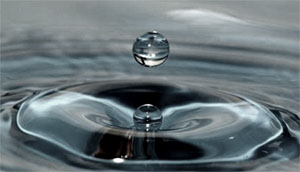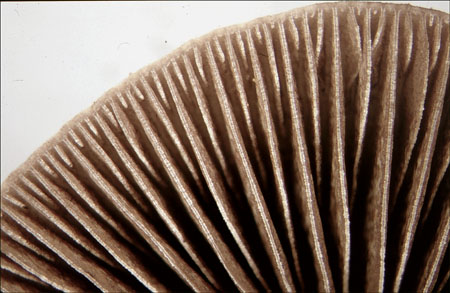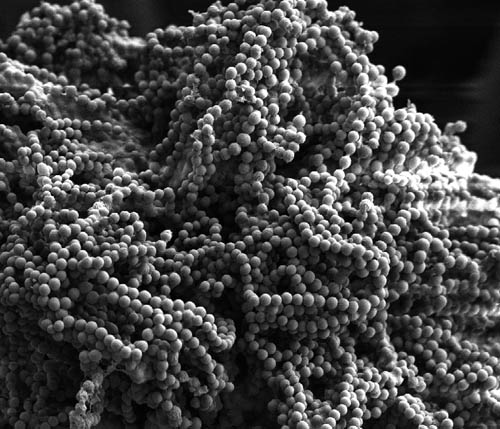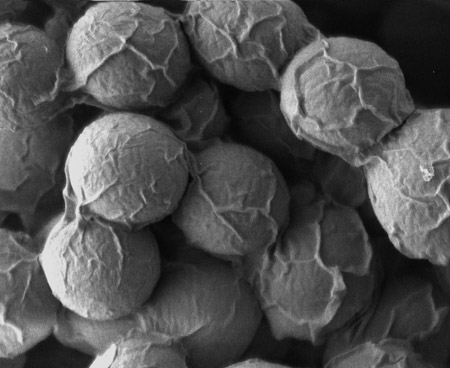
|
Reflections on Symmetry in Nature by M Halit Umar, The Netherlands |
As a retired MD, I look back at the long professional period of mine which actually started in 1960 with the class of gross anatomy followed by microscopy, and then, the evolution of diseases, called pathogenesis. Do not think that this is an essay about my confessions; it is rather about reflections on Nature, its beauty and astonishing construction, a trial of understanding of the basics. Researchers, both amateurs and professionals, are trying to get a glimpse of understanding about how Nature is in increasing complexity intertwined by universal rules and forms through his/her work even though this side of their activities are frequently not directly mentioned.
All previous works of researchers revealed that Nature uses seemingly simple building blocks at all levels which remained unchangeable from the first day on. Nature evolved and this process will steadily proceed.
It is fascinating to know that two kinds of gasses, namely oxygen and hydrogen, make a fluid which we call water, the hub of life. A substance which can be solid, fluid or gas depending on the temperature. Both hydrogen and oxygen are relatively simple atoms but their combination makes a reality of what we call Life. If we find water in a planet, we will be certain that life was or is on the planet. Water, seemingly is a simple molecule but is the most powerful and essential vehicle of life!
The philosophy of science dictates that a work is scientifically acceptable if it is reproducible and if it is unequivocally demonstrated the validity of the methods used and results obtained. At the basis of such studies lies the observation. A perfect observation of natural phenomena is thus inevitable. So, one can gather all necessary ingredients of further study, mostly questions of and seldom the answers to “how and why” such things happen. We primarily observe the world around us with the naked eye, thus grossly, macroscopically. But what about beyond what is perceptible to human eyes? (Yes, it is true that human eyes are examples of wonderful anatomical developments, which took place during millions of years of evolution, but human eyes are, in many ways, still limited sensory devices.) Such interests resulted in the discovery of microscopes. And microscopy evolved too from a few tens of magnification to almost molecular level. To be able to see what is going on beyond the visible world was the driving power for me as well. I should say that I was a lucky fellow that I could work with almost all kinds of microscopes in my career.
In the last episode, from 1987 on and at the beginning of 90's, I have experimented with microwave ovens for its application to and improving histological techniques used in the daily practice of a diagnostic pathologist. Paraffin as an embedding material and, of course, water as the vehicle of the solutions were tested for their behaviour under the microwave irradiation. Paraffin didn't melt even after 30 minutes of full power irradiation whereas water boiled in a few minutes. This is why our food containing even a small amount of water gets warm or cooked in the microwave oven in a short time of period. What kind of properties of paraffin or water determine whether they react or not to react to the microwave irradiation which is, speaking in physical terms, just a form of energy?
In water molecules, two hydrogen atoms are bound in such a way that they form a dipole and furthermore they are slightly asymmetrically aligned. Asymmetrical, polar molecules are subject to a torque and rotate to align themselves in an electric field. The acceleration of the rotation results in their temperature increasing. So, very easily water can boil in a microwave oven in minutes. To the contrary, paraffin molecules are not polar, this is the reason why paraffin cannot respond to the microwave irradiation. You could say that water molecules have a kind of antenna absorbing electromagnetic waves while paraffin molecules do not.
These obviously simple, technical observations and facts triggered my thoughts to re-evaluate my knowledge about symmetry versus asymmetry in general, more profoundly in the morphogenesis, during developing diseases or getting older (aged, senescent), at molecular levels or even in a larger scale, of the evolution of life or universum. It became clear to me that symmetry has many forms, and definitions; it is not simply right and left halves of an apple! Furthermore, if you apply this knowledge to biological phenomena, you have to remember that a notion of 3D (three dimensions) is not enough to perceive the real facts. There is an other dimension, the time. Unfortunately, we frequently and unjustly neglect the fourth dimension. For example, a microscopist studying tissue sections should know that the fourth dimension is frozen by several means whereas life processes are always in an evolving continuum.
My observations indicate that symmetry in Nature and life phenomena prevails. Any observable form has a symmetrical beginning. You may say a bilateral symmetry, or define it as radial symmetry. Look at the microscopical images of the ovary of my cat in this earlier Micscape article and notice out how nicely symmetrical are the egg cells. Cut a mushroom just through the centre of its cap and look at the halves (picture). You may become fascinated about the symmetry of the developing embryos at the beginning, or of your face, body, etc. And when you see almost perfectly symmetrical and spherical tiny water drops on the flowers in your garden in the morning glory, you may think about this issue of symmetry once again.
It may be correct to hypothesise that everything starts in a symmetrical form and, in general, getting old means small but steady deviations from that in the fourth dimension.
Also it also may be correct to assume that some wonderful accidents took place at the very beginning of the universe, like the occurrence of bipolar and asymmetrical (water) molecules. Thanks to such an accident I can write my thoughts now and you may read it as well.
Remember, to be symmetrical versus asymmetrical has a crucial meaning and plays a fundamental role in Nature. Also for macro-micro-scopists.
Comments to the author are welcomed. M. H. UMAR, MD PhD
Images

1
- Two tiny water drops which are perfectly spherical are falling onto a
large water surface. The impact of the first one caused a symmetrical (circular)
shock wave on the water surface. The slightly higher water drop which will
follow the first one is perfectly spherical. Circles and spherical objects
have an ideal symmetry when a cross section can be made through the centre of
them. One half will be identical to the other as a mirror view. The ideal,
natural, symmetrical forms will only be disturbed if their complexities
increase. This photo has been taken from the internet and as far as I could
check it is anonymous to me.
2 - http://www.adrianbruce.com/Symmetry/
This is the link of a very didactical, well illustrated Web Site and
primarily intended to attract younger readers. Nevertheless, it has several
definitions and amazing examples of symmetry, including school projects and
computer programs.

3
- Leaf of a grape vine. This is a symmetrically shaped leaf. If gravity and
surface tension did not predominate, the
water drops on the surface would still be spherical as well.

4
- This photograph was taken of a small mushroom found in a forest. Its cap
was about 15 mm in diameter and was turned upside down to observe the lamellae
(gills). Such a macroscopical study immediately reveals what Nature does during
development of a mushroom, but in general, this is true for all kinds of
developing organisms: In one way or the other, development starts in symmetrical
forms. This picture illustrates radial symmetry (if you can imagine the complete image
with the lamellae oriented towards the centre).

5
- Aspergillus sp., a world wide dispersed, microscopical fungus
which
produces very many spores. They may cause allergies or even fulminant and lethal
diseases to humans (Aspergillus fumigatus) in compromised patient.
This
Low Temperature Scanning Electron Microscopy (LTSEM) image illustrates a tuft of
aspergillus spores arranged in rows.

6 - Here we see spherically formed Aspergillus spores at a higher magnification again through the LTSEM. They are about 1 micrometre in size.
When a fungus spore germinates, it produces tube like structures called hyphae. When we put spores to germinate on a Petri glass with suitable nutrients and provide humidity, an optimal temperature and other supplementary needs, they will grow in circular form which we sometimes call a colony, (this is equally applicable to the growth of bacteria and other microscopic organisms in Petri dishes).
If you buy some nice mushrooms for your meal, cut it through the centre of its cap in a vertical position and just look at the halves. It is wonderful to find that there's a bilateral symmetry and radial symmetry of the gills before your very eyes. Then think about this: this mushroom has started from a spherical spore which grew as cylindrical hyphae. Then consider that all mushrooms are just made of long, interwoven cylindrical hyphae. When a mushroom produces its own spores, they are again spherical. This is a life cycle in brief of a mushroom.
When you observe the developments macroscopically and see forms also microscopically, you may come to the conclusion that Nature tends to make things spherical and symmetrical; only complexities disturb that rule. A new life cycle will establish the rule again and again.
Please report any Web problems or offer general comments to the Micscape Editor.
Micscape is the on-line monthly magazine of the Microscopy UK website at Microscopy-UK